Australia’s leading science and research agency will cut hundreds of jobs across the nation as rising costs outpace funding.
Please login below to view content or subscribe now.
Membership Login
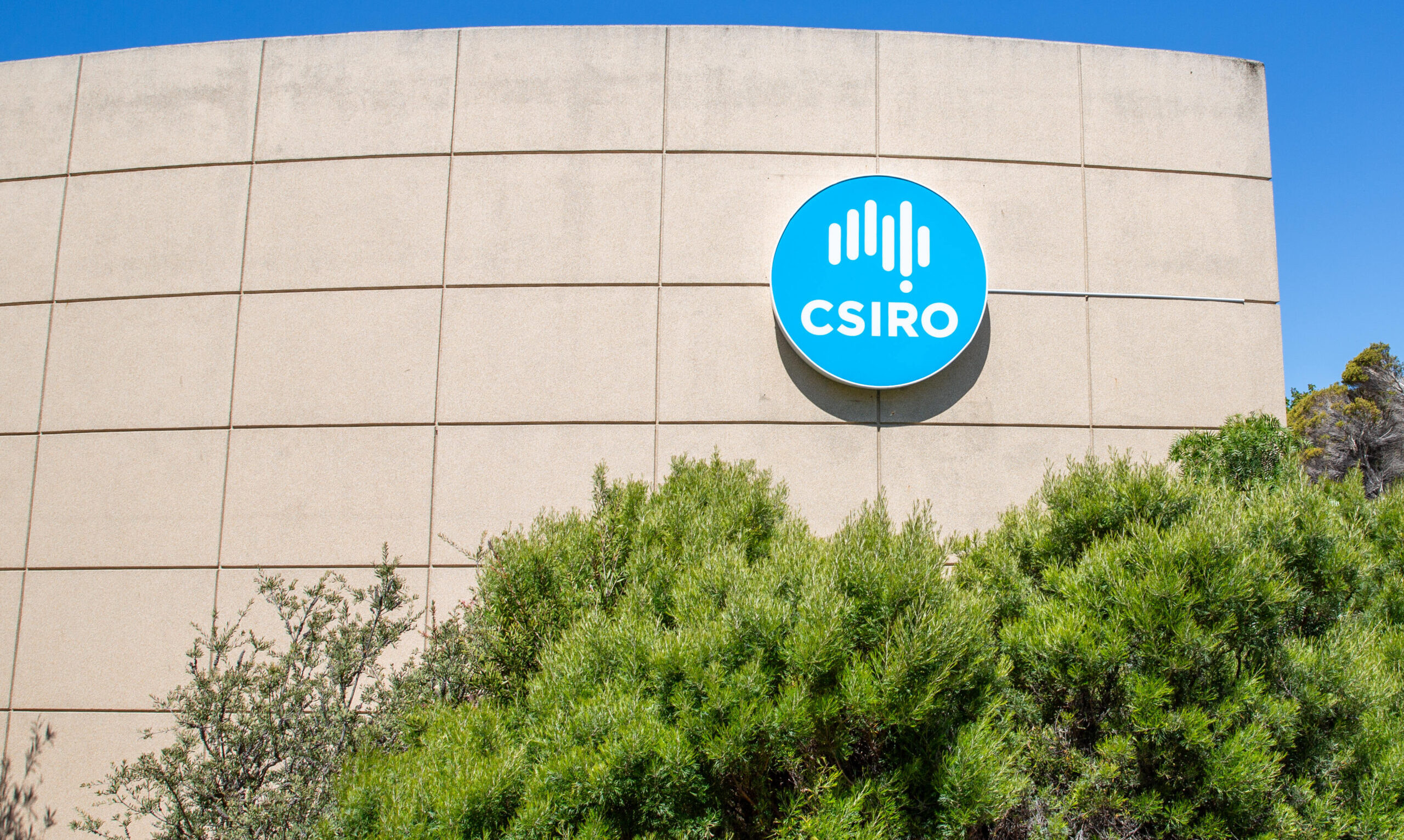
Australia’s leading science and research agency will cut hundreds of jobs across the nation as rising costs outpace funding.
Please login below to view content or subscribe now.
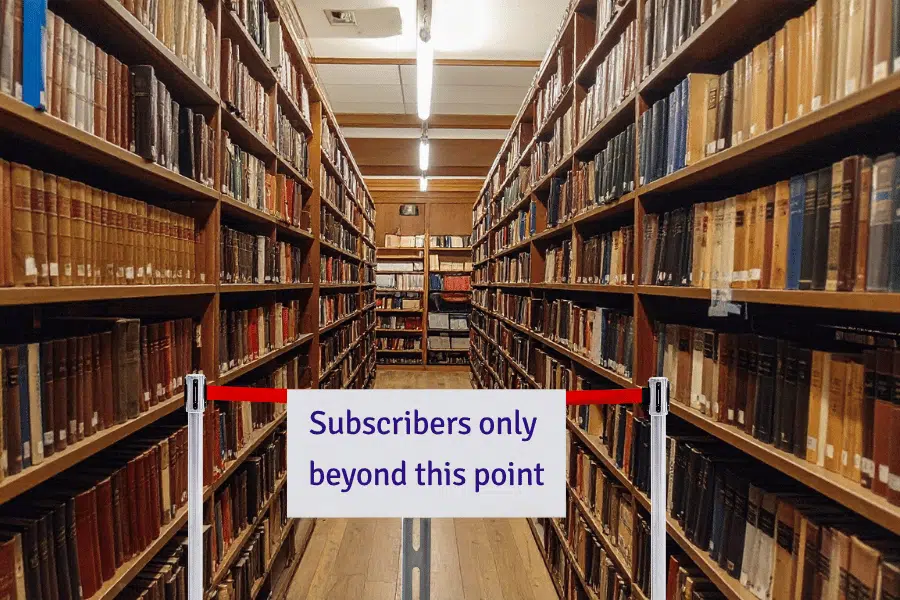
In the past, Gitanjali Yadav, like many other Indian researchers, would have used illegal online libraries to access academic journal articles. Now a new initiative by the Indian government brings hope as a legal alternative, delivering free article access to researchers across India.
While Yadav benefits from the new scheme, it has brought her new challenges.
Despite being one of the world’s top scientific research countries, many Indian universities don’t have enough funding for researchers to read the papers they need.
The Indian government sought to solve this issue with the One Nation One Subscription (ONOS) scheme. ONOS gives public Indian academic institutions free access to academic journals.
But just as soon as the government gave access, they also took it away. Following the ONOS launch, another important website for reading academic articles was shut down.
Previously Sci-Hub, an illegal academic library, was the one-stop shop to read and download academic literature. Many Indian academics relied on it to access articles behind paywalls. But now the platform has been banned, leaving many Indian academics, and their research, without options.
A researcher at the National Institute of Plant Genome Research, Yadav downloads and analyzes thousands of academic articles for her research. Now, her attempts to access these articles on a mass scale have led to blocks by publishers even though her institution has subscriptions.
Researchers worry that ONOS will not be able to replace Sci-Hub effectively, and that this will lead to downstream effects in conducting research.
India’s access problems raise a bigger question: can countries in the Global South compete in science when they don’t have the same access to information as richer countries?
Obtaining academic articles isn’t always simple. Similar to checking a book out from a library, you can only read an article if it is held in a library’s collection. Access to research papers is given through universities and academic institutions.
Academic journal subscriptions and publishing fees are estimated to earn $10 billion annually in the United States alone. The average cost of an annual subscription to a single journal by an Indian institution is around $1,300, though journals are often sold together in packages. The costs of these packages can vary, but a large Indian institution could expect to pay $50,000 for one year’s access, making the fee unaffordable for many Indian institutions.
Meanwhile, the researchers who provide articles and provide peer review for the journals are unpaid for their work
Without access through their university, many academic articles are kept behind paywalls. Researchers can pay to read a paper, but fees average around $50 for a single article, and Indian universities can’t pay for all the journals they need.
“You’re somebody working in an Indian laboratory,” said Peter Murray-Rust, Cambridge researcher and well-known advocate for Open Access science. “What are you going to do? You’re going to pirate it.”
Launched in 2011, Sci-Hub changed Indian research by allowing anyone to illegally read articles for free, even if the articles were behind paywalls.
One fan was Jonny Coates, the executive director of Rippling Ideas, an organization that advocates for open access to scholarly works. “There are some people who tell you, actually, what Sci-Hub’s done is it solved the access problem,” he said.
At its peak, Sci-Hub provided access to over 81 million research articles. For academics in India, many started downloading articles illegally. The country downloaded over 5 million articles from Sci-Hub in 2017 alone.
Comments from hundreds of Indian researchers can be found thanking Alexandra Elkyban, Sci-Hub’s founder, online: “The website Sci-Hub you have developed is like an oasis in the desert for people like me,” wrote Indian researcher Keshav Moharir. “God bless you.”
Now the platform is banned, and the Indian research scene is changing. The Indian ban on Sci-Hub follows a 2020 lawsuit filed by major academic publishers like Elsevier and Wiley.
When the Indian government launched the $715 million ONOS initiative earlier this year it was heralded as a solution to the access problem because it gave eligible public institutions free access to 13,000 academic journals.
The announcement was met with much excitement: cutting-edge research could now be pursued without financial barriers. Researchers from small institutions were enthusiastic that they could finally access the resources previously limited to top tier universities. Indian Prime Minister Narendra Modi described it as a “game-changer for Indian academia and for youth empowerment,” in an X post.
But ONOS has also faced criticism from researchers. For those offered ONOS, more than half are still waiting to use the platform, and it’s unclear why they remain without access. At the same time, ONOS also only covers a small portion of the some 40,000 academic journals worldwide, limiting access to specialized publications that can be important for researchers. And there are logistical challenges, highlighted by Yardav’s difficulties.
Private universities, meanwhile, are left without ONOS or Sci-Hub. And some say it will be difficult for them to conduct research going forward.
India’s challenges show a bigger problem in the Global South. In contrast to institutions in high-income countries, those in the Global South have less money and fewer legal ways to read papers. That means that Global South countries are less likely to be able to read paywalled papers and include them in their own research. And because of this, their research may not be as strong or influential.
Lack of access can also influence what type of research gets done. A recent study by researchers at NYU Abu Dhabi on paywalls and scientific data concluded that paywalls can compound disparities between who gets access and who doesn’t and who ends up contributing to the global production of knowledge.
One researcher from Ghana quoted in the study noted that the availability of papers could affect which projects he recommends to his students.
Murray-Rust said that being able to read the body of research is so essential for conducting good science, that in many cases, piracy becomes a standard practice.
Whether government-led schemes can replace grassroots alternatives like Sci-Hub effectively is yet to be seen.
Researchers like Yadav fear that ONOS will end up being more symbolic rather than a real change for India’s research community. For now, India’s academic community finds itself in a difficult phase of transition.
1. Why does it cost money to access some research studies?
2. Who should fund scholarly research?
3. If you put a lot of time and money into conducting a research study, would you give away the results for free? Why or why not?

Key points:
With the new school year now rolling, teachers and school leaders are likely being hit with a hard truth: Many students are not proficient in reading.
This, of course, presents challenges for students as they struggle to read new texts and apply what they are learning across all subject areas, as well as for educators who are diligently working to support students’ reading fluency and overall academic progress.
Understanding the common challenges students face with reading–and knowing which instructional strategies best support their growth–can help educators more effectively get students to where they need to be this school year.
Understanding the science of learning
Many districts across the country have invested in evidence-based curricula grounded in the science of reading to strengthen how foundational skills such as decoding and word recognition are taught. However, for many students, especially those receiving Tier 2 and Tier 3 interventions, this has not been enough to help them develop the automatic word recognition needed to become fluent, confident readers.
This is why coupling the science of reading with the science of learning is so important when it comes to reading proficiency. Simply stated, the science of learning is how students learn. It identifies the conditions needed for students to build automaticity and fluency in complex skills, and it includes principles such as interleaving, spacing practice, varying tasks, highlighting contrasts, rehearsal, review, and immediate feedback–all of which are essential for helping students consolidate and generalize their reading skills.
When these principles are intentionally combined with the science of reading’s structured literacy principles, students are able to both acquire new knowledge and retain, retrieve, and apply it fluently in new contexts.
Implementing instructional best practices
The three best practices below not only support the use of the science of learning and the science of reading, but they give educators the data and information needed to help set students up for reading success this school year and beyond.
Screen all students. It is important to identify the specific strengths and weaknesses of each student as early as possible so that educators can personalize their instruction accordingly.
Some students, even those in upper elementary and middle school, may still lack foundational skills, such as decoding and automatic word recognition, which in turn negatively impact fluency and comprehension. Using online screeners that focus on decoding skills, as well as automatic word recognition, can help educators more quickly understand each student’s needs so they can efficiently put targeted interventions in place to help.
Online screening data also helps educators more effectively communicate with parents, as well as with a student’s intervention team, in a succinct and timely way.
Provide personalized structured, systematic practice. This type of practice has been shown to help close gaps in students’ foundational skills so they can successfully transfer their decoding and automatic word recognition skills to fluency. The use of technology and online programs can optimize the personalization needed for students while providing valuable insights for teachers.
Of course, when it comes to personalizing practice, technology should always enhance–not replace–the role of the teacher. Technology can help differentiate the questions and lessons students receive, track students’ progress, and engage students in a non-evaluative learning environment. However, the personal attention and direction given by a teacher is always the most essential aid, especially for struggling readers.
Monitor progress on oral reading. Practicing reading aloud is important for developing fluency, although it can be very personal and difficult for many struggling learners. Students may get nervous, embarrassed, or lose their confidence. As such, the importance of a teacher’s responsiveness and ongoing connection while monitoring the progress of a student cannot be overstated.
When teachers establish the conditions for a safe and trusted environment, where errors can occur without judgment, students are much more motivated to engage and read aloud. To encourage this reading, teachers can interleave passages of different lengths and difficulty levels, or revisit the same text over time to provide students with spaced opportunities for practice and retrieval. By providing immediate and constructive feedback, teachers can also help students self-correct and refine their skills in real time.
Having a measurable impact
All students can become strong, proficient readers when they are given the right tools, instruction, and support grounded in both the science of learning and the science of reading. For educators, this includes screening effectively, providing structured and personalized practice, and creating environments where students feel comfortable learning and practicing skills and confident reading aloud.
By implementing these best practices, which take into account both what students need to learn and how they learn best, educators can and will make a measurable difference in students’ reading growth this school year.
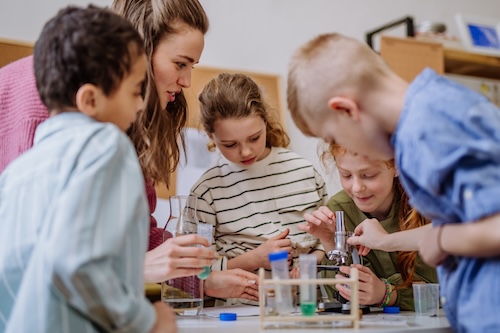
Key points:
Although the Next Generation Science Standards (NGSS) were released more than a decade ago, adoption of them varies widely in California. I have been to districts that have taken the standards and run with them, but others have been slow to get off the ground with NGSS–even 12 years after their release. In some cases, this is due to a lack of funding, a lack of staffing, or even administrators’ lack of understanding of the active, student-driven pedagogies championed by the NGSS.
Another potential challenge to implementing NGSS with fidelity comes from teachers’ and administrators’ epistemological beliefs–simply put, their beliefs about how people learn. Teachers bring so much of themselves to the classroom, and that means teaching in a way they think is going to help their students learn. So, it’s understandable that teachers who have found success with traditional lecture-based methods may be reluctant to embrace an inquiry-based approach. It also makes sense that administrators who are former teachers will expect classrooms to look the same as when they were teaching, which may mean students sitting in rows, facing the front, writing down notes.
Based on my experience as both a science educator and an administrator, here are some strategies for encouraging both teachers and administrators to embrace the NGSS.
For teachers: Shift expectations and embrace ‘organized chaos’
A helpful first step is to approach the NGSS not as a set of standards, but rather a set of performance expectations. Those expectations include all three dimensions of science learning: disciplinary core ideas (DCIs), science and engineering practices (SEPs), and cross-cutting concepts (CCCs). The DCIs reflect the things that students know, the SEPs reflect what students are doing, and the CCCs reflect how students think. This three-dimensional approach sets the stage for a more active, engaged learning environment where students construct their own understanding of science content knowledge.
To meet expectations laid out in the NGSS, teachers can start by modifying existing “recipe labs” to a more inquiry-based model that emphasizes student construction of knowledge. Resources like the NGSS-aligned digital curriculum from Kognity can simplify classroom implementation by providing a digital curriculum that empowers teachers with options for personalized instruction. Additionally, the Wonder of Science can help teachers integrate real-life phenomena into their NGSS-aligned labs to help provide students with real-life contexts to help build an understanding of scientific concepts related to. Lastly, Inquiry Hub offers open-source full-year curricula that can also aid teachers with refining their labs, classroom activities, and assessments.
For these updated labs to serve their purpose, teachers will need to reframe classroom management expectations to focus on student engagement and discussion. This may mean embracing what I call “organized chaos.” Over time, teachers will build a sense of efficacy through small successes, whether that’s spotting a studentconstructing their own knowledge or documenting an increased depth of knowledge in an entire class. The objective is to build on student understanding across the entire classroom, which teachers can do with much more confidence if they know that their administrators support them.
For administrators: Rethink evaluations and offer support
A recent survey found that 59 percent of administrators in California, where I work, understood how to support teachers with implementing the NGSS. Despite this, some administrators may need to recalibrate their expectations of what they’ll see when they observe classrooms. What they might see is organized chaos happening: students out of their seats, students talking, students engaged in all different sorts of activities. This is what NGSS-aligned learning looks like.
To provide a clear focus on student-centered learning indicators, they can revise observation rubrics to align with NGSS, or make their lives easier and use this one. As administrators track their teachers’ NGSS implementation, it helps to monitor their confidence levels. There will always be early implementers who take something new and run with it, and these educators can be inspiring models for those who are less eager to change.
The overall goal for administrators is to make classrooms safe spaces for experimentation and growth. The more administrators understand about the NGSS, the better they can support teachers in implementing it. They may not know all the details of the DCIs, SEPs, and CCCs, but they must accept that the NGSS require students to be more active, with the teacher acting as more of a facilitator and guide, rather than the keeper of all the knowledge.
Based on my experience in both teaching and administration roles, I can say that constructivist science classrooms may look and sound different–with more student talk, more questioning, and more chaos. By understanding these differences and supporting teachers through this transition, administrators ensure that all California students develop the deeper scientific thinking that NGSS was designed to foster.
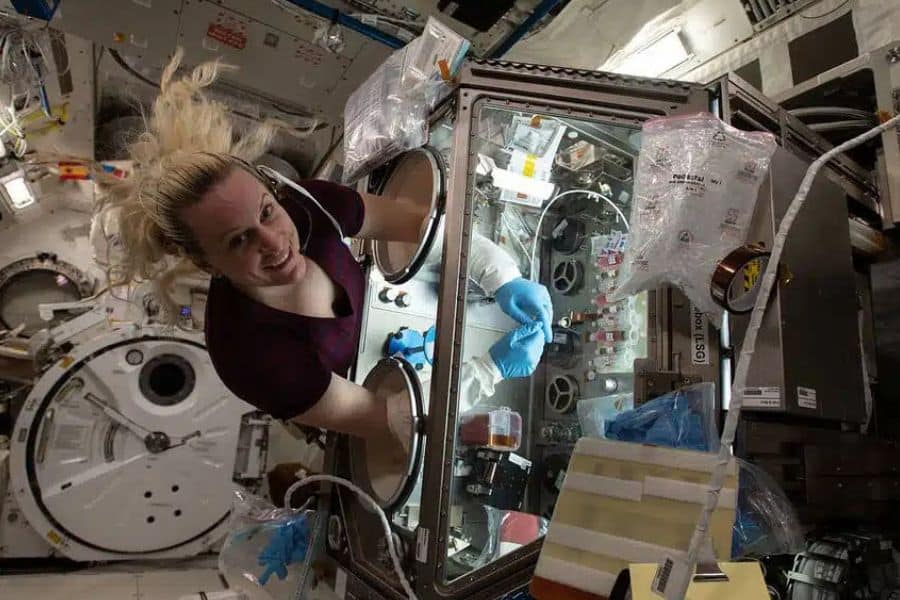
This week marks World Space Week, an international celebration of humankind’s last frontier launched by the United Nations in 1999. In more than 80 countries, people are celebrating through thousands of events.
One of the goals of space week is to let people know how many of the products we depend on down on earth came out of space exploration programs: Life support systems for miners, memory foam mattresses, scratch-resistant lenses, nutritional supplements, cordless tools and freeze-dried food.
Learning about outer space and space exploration excites young people and attracts them to science, technology, engineering and math fields.
But for News Decoder, it is the international cooperation we see in space exploration programs that excites us. When we look to the moon, our galaxy and beyond, we see the possibility for peace and cooperation here on Earth.
To celebrate World Space Week, check out some of the stories we’ve published about outer space and the people exploring it.

Key points:
While most teachers are eager to implement the science of reading, many lack the time and tools to connect these practices to home-based support, according to a new national survey from Lexia, a Cambium Learning Group brand.
The 2025 Back-to-School Teacher Survey, with input from more than 1,500 K–12 educators nationwide, points to an opportunity for district leaders to work in concert with teachers to provide families with the science of reading-based literacy resources they need to support student reading success.
Key insights from the survey include:
“Teachers know that parental involvement can accelerate literacy and they’re eager for ways to strengthen those connections,” said Lexia President Nick Gaehde. “This data highlights how districts can continue to build on momentum in this new school year by offering scalable, multilingual, and flexible family engagement strategies that align with the science of reading.”
Teachers also called for:
Gaehde concluded, “Lexia’s survey reflects the continued national emphasis on Structured Literacy and shows that equipping families is essential to driving lasting student outcomes. At Lexia we’re committed to partnering with districts and teachers to strengthen the school-to-home connection. By giving educators practical tools and data-driven insights, we help teachers and families work together–ensuring every child has the literacy support they need to thrive.”
The complete findings are available in a new report, From Classroom to Living Room: Exploring Parental Involvement in K–12 Literacy. District leaders can also download the accompanying infographic, “What District Leaders Need To Know: 5 Key Findings About Family Engagement and Literacy,” which highlights the most pressing data points and strategic opportunities for improving school-to-home literacy connections.
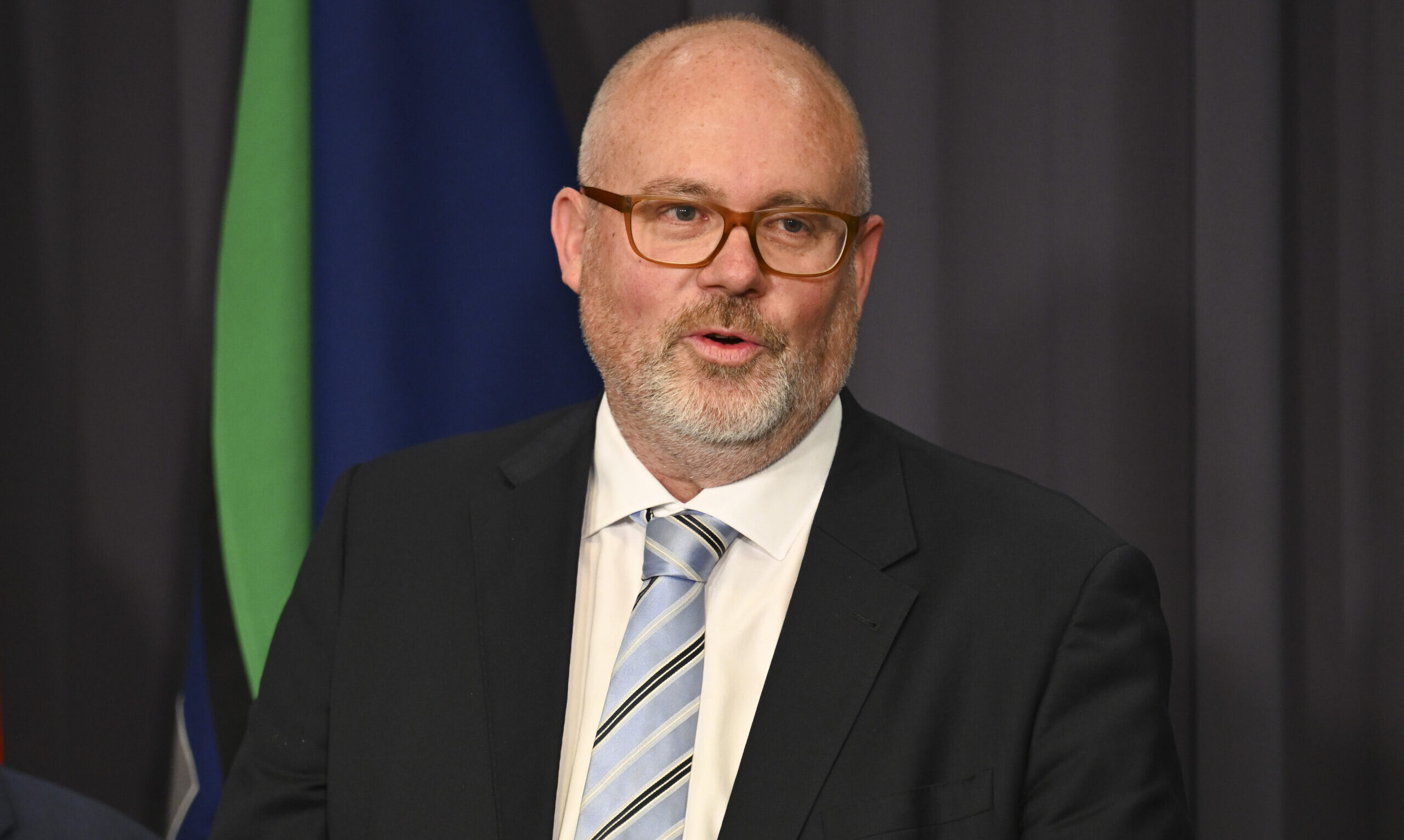
The Albanese government has asked universities, researchers and businesses for feedback on joining the world’s largest research program.
Please login below to view content or subscribe now.
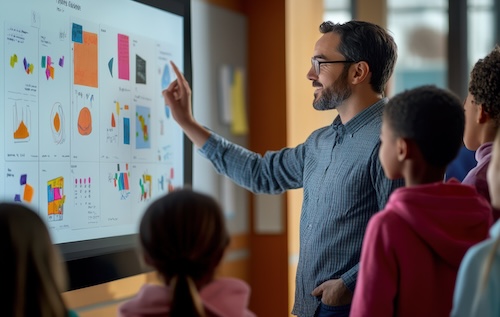
This story was originally published by Chalkbeat. Sign up for their newsletters at ckbe.at/newsletters.
I was conferencing with a group of students when I heard the excitement building across my third grade classroom. A boy at the back table had been working on his catapult project for over an hour through our science lesson, into recess, and now during personalized learning time. I watched him adjust the wooden arm for what felt like the 20th time, measure another launch distance, and scribble numbers on his increasingly messy data sheet.
“The longer arm launches farther!” he announced to no one in particular, his voice carrying the matter-of-fact tone of someone who had just uncovered a truth about the universe. I felt that familiar teacher thrill, not because I had successfully delivered a physics lesson, but because I hadn’t taught him anything at all.
Last year, all of my students chose a topic they wanted to explore and pursued a personal learning project about it. This particular student had discovered the relationship between lever arm length and projectile distance entirely through his own experiments, which involved mathematics, physics, history, and data visualization.
Other students drifted over to try his longer-armed design, and soon, a cluster of 8-year-olds were debating trajectory angles and comparing medieval siege engines to ancient Chinese catapults.
They were doing exactly what I dream of as an educator: learning because they wanted to know, not because they had to perform.
Then, just recently, I read about the American Federation of Teachers’ new $23 million partnership with Microsoft, OpenAI, and Anthropic to train educators how to use AI “wisely, safely and ethically.” The training sessions would teach them how to generate lesson plans and “microwave” routine communications with artificial intelligence.
My heart sank.
As an elementary teacher who also conducts independent research on the intersection of AI and education, and writes the ‘Algorithmic Mind’ column about it for Psychology Today, I live in the uncomfortable space between what technology promises and what children actually need. Yes, I use AI, but only for administrative work like drafting parent newsletters, organizing student data, and filling out required curriculum planning documents. It saves me hours on repetitive tasks that have nothing to do with teaching.
I’m all for showing educators how to use AI to cut down on rote work. But I fear the AFT’s $23 million initiative isn’t about administrative efficiency. According to their press release, they’re training teachers to use AI for “instructional planning” and as a “thought partner” for teaching decisions. One featured teacher describes using AI tools to help her communicate “in the right voice” when she’s burned out. Another says AI can assist with “late-night lesson planning.”
That sounds more like outsourcing the foundational work of teaching.
Watching my student discover physics principles through intrinsic curiosity reminded me why this matters so much. When we start relying on AI to plan our lessons and find our teaching voice, we’re replacing human judgment with algorithmic thinking at the very moment students need us most. We’re prioritizing the product of teaching over the process of learning.
Most teachers I talk to share similar concerns about AI. They focus on cheating and plagiarism. They worry about students outsourcing their thinking and how to assess learning when they can’t tell if students actually understand anything. The uncomfortable truth is that students have always found ways to avoid genuine thinking when we value products over process. I used SparkNotes. Others used Google. Now, students use ChatGPT.
The problem is not technology; it’s that we continue prioritizing finished products over messy learning processes. And as long as education rewards predetermined answers over curiosity, students will find shortcuts.
That’s why teachers need professional development that moves in the opposite direction. They need PD that helps them facilitate genuine inquiry and human connection; foster classrooms where confusion is valued as a precursor to understanding; and develop in students an intrinsic motivation.
When I think about that boy measuring launch distances with handmade tools, I realize he was demonstrating the distinctly human capacity to ask questions that only he wanted to address. He didn’t need me to structure his investigation or discovery. He needed the freedom to explore, materials to experiment with, and time to pursue his curiosity wherever it led.
The learning happened not because I efficiently delivered content, but because I stepped back and trusted his natural drive to understand.
Children don’t need teachers who can generate lesson plans faster or give AI-generated feedback, but educators who can inspire questions, model intellectual courage, and create communities where wonder thrives and real-world problems are solved.
The future belongs to those who can combine computational tools with human wisdom, ethics, and creativity. But this requires us to maintain the cognitive independence to guide AI systems rather than becoming dependent on them.
Every time I watch my students make unexpected connections, I’m reminded that the most important learning happens in the spaces between subjects, in the questions that emerge from genuine curiosity, in the collaborative thinking that builds knowledge through relationships. We can’t microwave that. And we shouldn’t try.
Chalkbeat is a nonprofit news site covering educational change in public schools.
For more news on AI in education, visit eSN’s Digital Learning hub.

A study in California this year found that cancer patients were much more likely to die from the disease if they breathed in air pollution from wildfires a year after their diagnosis.
In 2020, flooding in Spain caused by Storm Gloria forced 118 cancer patients to cancel their radiotherapy treatment. And in 2019, researchers from the University of Michigan found a higher death rate among adult cancer patients who were affected by Hurricane Katrina.
It turns out that in many ways, climate change affects our health. We can see this directly when looking at cancer — something that affects one in five people around the world directly, and just about everyone else connected to those people indirectly.
I know this first hand. Four years ago a close family member was diagnosed with cancer. It made me wonder: What could we have done to prevent it? Was it something they ate? Their amount of exercise?
At the time, we were living in South Korea, a country notorious for its heavy air pollution days, and I couldn’t help but wonder if that might have had an impact on the diagnosis.
Then, as I watched them go through multiple recurrences of cancer, the question gradually evolved into this: How can you ensure successful cancer treatment? And subsequently, how can you ensure that everyone has access to safe cancer treatment?
It turns out that air pollution isn’t the only problem. Extreme weather events caused by climate change can disrupt supply chains which results in shortages of critical medical supplies.
In 2017, an intravenous fluid manufacturing company in Puerto Rico, for example, was destroyed by Hurricane Maria. The company was a major supplier of IV fluids for hospitals in the United States and the destruction led to a shortage in essential IV fluids.
In an attempt to investigate further, I contacted Dr. Kishan Gupta, a specialist in comprehensive ophthalmology, cornea and external diseases, at the Kaiser Downey Medical Center in California. Over a WhatsApp chat, he told me that Hurricane Maria not only led to major disruptions in eye drop manufacturing but also in IV saline for surgery and intraoperative anesthetics at his hospital.
Dr. David Kim, an orthopedic surgeon at the Worcester Medical Center in the U.S. state of Massachusetts, then told me that when IV supplies are disrupted, all surgeries that require such fluids are delayed — anything from hand and hip replacement surgeries to the removal of cancer tumors.
IV saline and intraoperative anesthetics are crucial for cancer patients, especially IV saline, which helps to dilute toxic fluids and dehydration as a result of chemotherapy.
Crucially, climate change-induced extreme weather events damage infrastructure, preventing important medical equipment and supplies from reaching destined locations at an appropriate time.
On the note of promptness, one of cancer’s most threatening characteristics is its fast, uncontrolled growth. In the field of medicine, this means that cancer treatment must be administered at the correct time, with the correct steps.
After Hurricane Maria in Puerto Rico, a 70% cancel rate was observed for brachytherapy, a form of radiation therapy. In Mexico after the 2017 earthquake, cancer surgeries were canceled with a median delay of 22.5 days.
During natural disasters, transportation networks and electrical systems break down. This means that people are unable to get to their hospital for treatment, and additionally, treatments like radiation which depend on electricity, can’t be administered.
The COVID-19 pandemic, while not a climate change-induced event, showed what happens when supply chains break down. Needed supplies of everything from towels to anti-septic solutions became unavailable and as a result, people died.
Of course, cancer isn’t the only health concern related to climate change. Rising temperatures and more frequent natural disasters can create favorable conditions for insects such as ticks and mosquitoes that transmit harmful pathogens.
Hurricanes, tornados and other extreme weather events also discourage people from traveling and that can cause a consequent lack in blood donations at hospitals, according to Dr. Sung Eun Yang at the Kaiser Panorama City Medical Center in California. “Blood and blood products are a limited precious resource,” Dr Yang said. “Donor turn out may be dependent on the weather. I recall in Boston we had a terrible winter storm with no donor turn out and experienced significant shortages in blood products.”
In the United States, roughly 25% of blood donations in the United States go to cancer treatments.
Furthermore, it turns out that severe heat and humidity can affect medications — how they operate or their very properties. A number of common cancer medications are highly heat-sensitive. This means that as the Earth’ s climate warms, cancer patients who live in hot places will have a more difficult time storing and accessing safe medication, particularly in economically poor areas that can’t invest in energy-consuming storage. But even those in wealthier, cooler countries will be affected if they import products from those regions.
Finally, because of climate change, we are also seeing an increase in wildfires due to extreme and sustained drought conditions and wildfires too, ultimately leading to increases in cancer.
For instance, cancer is the number one cause of death in the fire fighting industry, accounting for 70% of all deaths.
Harvard University researcher Mary Johnson told the publication E&E News this year that potentially harmful chemicals are released every time a structure burns.
“Plumbing has copper and lead in it,” she stated. “Paint has toxic chemicals. Electronics, plastics have really nasty stuff in them. All these chemicals we don’t think of occurring in a wildland fire are now part of the smoke.”
So what can we do?
In preparation for all potential disasters, hospitals could have a disaster plan to help ensure that patients receive any and all important data during a future disaster. For example, the United States Department of Health and Human services has released a study on the efficacy of electronic health records during disasters. If a storm is forecasted in a region, an electronic emergency chart could be made for each patient. This plan could also come in the form of new infrastructure or mechanisms meant to keep the hospital safe from floods or fires.
Patients should also be provided with alternate ways to access healthcare information in order to connect with local healthcare teams, and the American Association of Colleges of Nursing recently added climate change education to the list of required skills for nursing education programs.
Finally, past cancer survivors of disasters have suggested that countries like Puerto Rico can be more prepared and adaptable in terms of exploring alternatives like renewable energy, that aren’t as susceptible to power outages from storms.
As the climate deteriorates, our responsibility in pushing back against the climate crisis will expand in multiple ways.
Our health and the health of the people we love will depend on the health of our planet. That means that it is our responsibility to protect ourselves, our loved ones and all of those currently battling cancer from climate change.
1. What connection is there between climate change and cancer rates?
2. What can be done to keep people from dying of climate-change related cancer?
3. What, if anything, can you do to help cool down our planet?
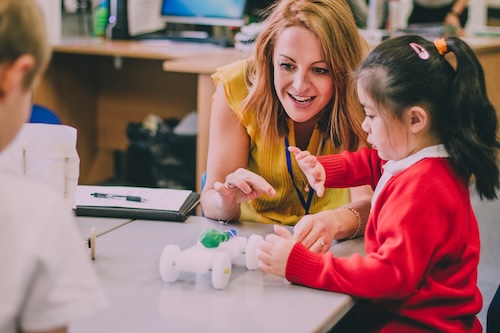
Key points:
New elementary teachers who promote equity in science are proving highly effective at engaging students, no matter their background, a new University of Michigan study shows.
U-M researchers found that new educators are pioneering paths in science education by offering opportunities for scientific conversations, innovative learning strategies and encouraging children to become active participants in scientific exploration.
“When teachers are equipped to foster a more equitable and just learning environment in science, it not only enhances children’s understanding of scientific concepts but also empowers them to see themselves as scientists and to use science to address real-world issues that matter in their communities,” said Elizabeth Davis, a professor at U-M’s Marsal Family School of Education.
“Beginning teachers use a range of effective strategies to work toward more equitable science teaching. They vary in their emphasis on opportunity and access, representation and identification, expanding what counts as science and engaging children as change-makers using science to support a better world. This variation highlights the multiplicity of entry points into this challenging work and shows these teachers’ many strengths.”
The study, published in the General Proceedings of the 5th Annual Meeting of the International Society for the Learning Sciences 2025, also identified areas for growth: These teachers were less consistently likely to work to broaden what counts as science and to link science to social justice.
Davis and co-authors Jessica Bautista and Victoria Pérez Nifoussi said the study helps understand how different approaches to equity in science education can work together, potentially influencing future teacher training for improved K-12 science learning.
They emphasized the clear need for teacher educators and curriculum developers to provide more concrete examples and resources to help future teachers navigate complex, justice-oriented approaches to science.
“All children deserve to experience the joy and wonder of the natural world, yet science is taught far less often than language arts or math in elementary schools,” Davis said. “Furthermore, many students are marginalized in science, including girls, students of color, children with learning differences and queer or gender nonconforming children.”
Funding challenges impact long-term research
The study is part of the U-M ASSETS research, a four-year longitudinal project that began in September 2023. Although it was intended to run for four years, the project, funded by the National Science Foundation, was terminated in its 20th month, just shy of two years from its start.
“The termination of these NSF projects–focused on STEM education, and in particular equity in STEM education–is going to adversely affect science education and science for generations to come,” Davis said.
“We are seeking additional funds for this work. Regardless, we will continue to support the teachers who participate in this project and we’ll continue to collect and analyze data to the extent we’re able to do so.”
The team is now working on characterizing the participants’ first year of teaching to assess how their approaches to equitable and just elementary science teaching align with and differ from their approaches during teacher education.
This news release originally appeared on U-M’s news site.